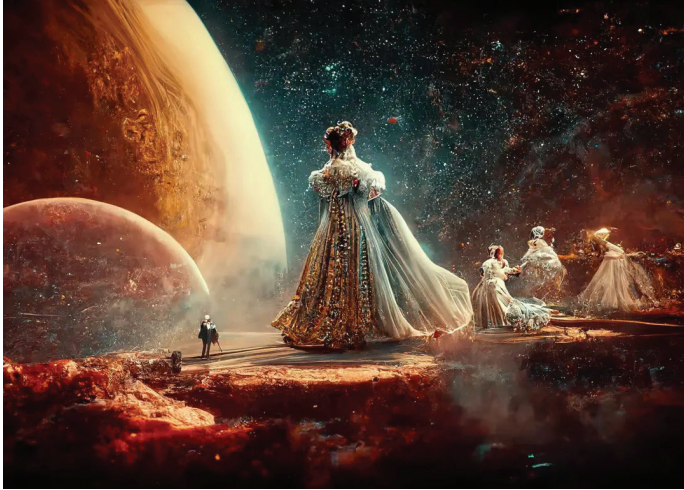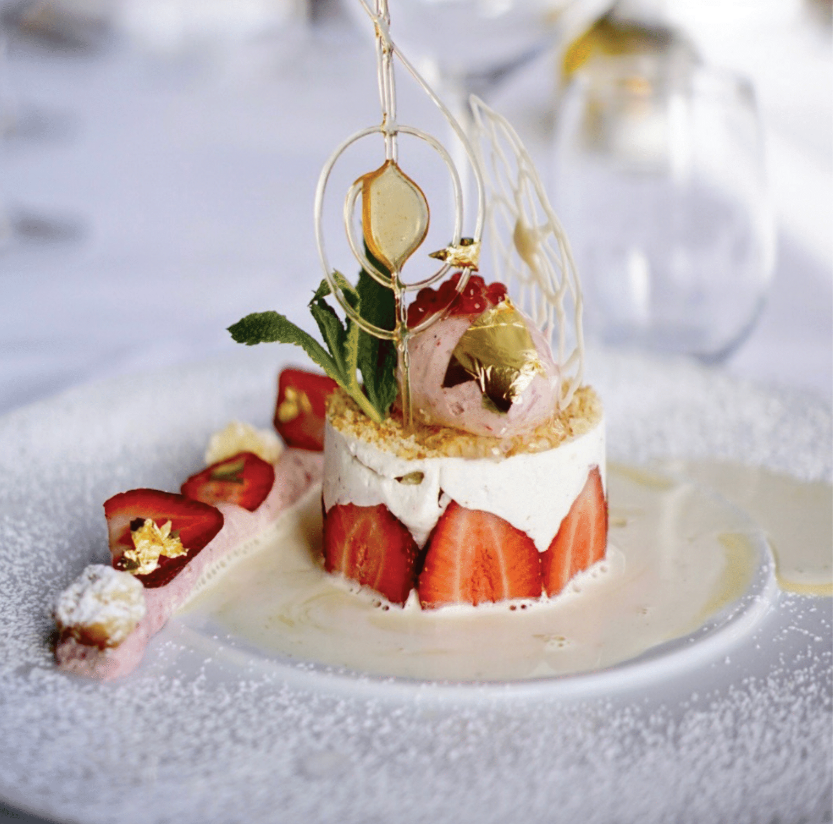FROM SHAMED TO FRAMED
How AI Art Lost Its Stigma

“ONCE OR TWICE IN EVERY CENTURY, IT SEEMS, THERE IS SOMETHING THAT ARRIVES WHICH CHANGES THINGS.” So said Daniel Birnbaum earlier this year.
Birnbaum is the man who leads London’s Royal College of Art course on virtual and augmented reality and AI. “Photography changed not just the distribution possibilities of art, but actually the ontology of what an art piece can be,” Birnbaum continued. “Right now, it’s similar to when the video camera arrived – or even moving film. It’s a transformation of that scale.” Birnbaum is, by profession alone, hardly likely to be a harbinger of negativity for the use of AI in art. After all, he runs a course that is looking to charge close to six thousand dollars to students for five days of tuition. Yet to dismiss AI art as a mere copycat frippery is to negate the long history of how machines and creativity have interwoven. The problem with looking back into history as a soothing balm to help us feel less anxious about the current rate of AI acceleration is that the examples the past throws at us are, consistently, not ones that everyday artists and creatives of bygone ages could access. When Ada Lovelace, the matriarch of computer science, worked as the amanuensis to Charles Babbage on his “Analytical Engine” in the early 1840s, she imagined a machine that could have artistic and not purely mathematical applications. The analytical engine was based on the Jacquard loom, which revolutionized the textiles industry at the start of the 19th century by feeding in punch cards which instructed the loom whether to stitch or not. By this method, a portrait of the loom’s inventor, Joseph Jacquard, was woven into a tapestry on the loom with 24,000 punched cards, You could call this the first digitised image. But it was about as accessible to the average lay artist as was the fresco of the Sistine Chapel. Compare the quantity of punch cards plus the manpower and time involved in creating the portrait of Jacquard to the workload of Jason Allen, who submitted an AI picture to a state sponsored art competition last year and took home first prize. Allen entered an artwork titled “Theatre d’Opera Spatial” into the “Digital Arts / Digitally-Manipulated Photography” category of the Colorado State Fair fine arts competition using a text-to-image generator called Midjourney. Many fellow entrants claimed that Allen had been deceptive in submitting the piece, but Allen was robust in his defense.
“I wanted to make a statement using artificial intelligence artwork,” he told reporters. “I feel like I accomplished that, and I’m not going to apologize for it.” Yet Allen undoubtedly participated personally in the creation of the piece. Creating an award-winning painting depicting a production of Carmen requires more dexterity and articulacy than simply typing ‘stage/opera/light/Italy’ into a generator and waiting for your cash prize. Hundreds of attempts at text ‘prompting’ have to be made to create what an artist is looking for. This is a typical example of a prompt created by New York AI artist and designer Nick St. Pierre. ‘35mm, 1990s action film still, close-up of a bearded man browsing for bottles inside a liquor store. WATCH OUT BEHIND YOU!!! (background action occurs)…a white Benz truck crashes through a store window, exploding into the background… broken glass flies everywhere, flaming debris sparkles light the neon night, 90s CGI, gritty realism.’ Perhaps it’s this kind of staccato didacticism, fused with chaos and randomness, that appeals to Britain’s enfant terrible of the art world, Damien Hirst, who, last year, embraced AI with ‘The Beautiful Paintings’; These swirly, abstract pieces were entirely AI-generated and available in both hand-signed physical wood versions and in digital-only NFT (nonfungible tokens) format. Inevitably, the screams of ‘it’s not proper art’ aimed at Hirst, Allen, et al. are as bilious and fulsome as they were a century ago when Marcel Duchamp put a urinal into an art gallery. Some people are still screaming this message at the Dadaist, some fifty-plus years after his death. Yet what is the ‘prompted’ work AI generates without the ‘prompter’? Surely, as long as the resulting work makes us feel something, then it has fulfilled its purpose? And whether the artist completed the job in 15 minutes or 15 years is hardly relevant if it has no emotional impact on anyone who gazes upon it. If AI art is devious then so was trompe l’oeil in its time. And if the definition of art is something that is crafted by an uncommonly gifted hand alone then we may as well also remove photography as a legitimate art form alongside AI and place them both where some would like to see artificial intelligence stay; as a fairground novelty propagated by charlatans and fraudsters. Yet, through this nascent era of AI art, it would appear that something approaching a distinctive style is emerging, despite the argument that the form is nothing more than a concertinaed and repackaged blitz of art history repurposed. Looking at a series of AI art pieces generated by Midjourney last year, Roland Meyer, a researcher at Ruhr University Bochum in Germany, noticed some recurring features. Many AI pieces would “shine and sparkle, as if illuminated from within,” he said while many also displayed “high dynamic range”, meaning differences in light levels within the image.
And just as every pre-Raphaelite needed to know something (however hazy) about art history and what they liked and disliked before they could truly create, so the AI-generated artist also needs to know something of his forbearers in the analog world. I tried typing a prompt into a few AI art generators, including Midjourney, Jasper, NightCafe, and dall-e-2, stating I wanted to create a “Jackson Pollock Vienna street scene.” At best I got a smudged picture of paint on the road of a Google Street Map image. State Fair art prizes are not won this way. We AI art neophytes need to understand Jackson Pollock as much as Duchamp needed to understand Fauvism and Roussel before he could create. But if there is a drawback to creating art using AI, it is the poverty of language’s ability to harness our deepest emotional reactions. This may explain why AI journalism and poetry is fathoms behind art when it comes to what we perceive as quality. For example, asking Chat GPT to write me a song lyric about Goya, I got the following: His legacy lives in each canvas, each frame, A testament to genius, forever the same, In Goya's art, we find a reflection of self, A painter whose truth transcends death's stealth. Shameful stuff. Perhaps this is because words are, by their very nature, paid to be descriptive.. It’s only when we see a work of art that we are admit to nothing more elaborate than that we “feel something.” Art is ineffable for, often, considerable amounts of time in a way that literature simply cannot replicate. Just as AI is showing us how weak it still is in terms of creating prose, in art it’s already begun the long shift away from cerebrally fooling us to emotionally moving us.




